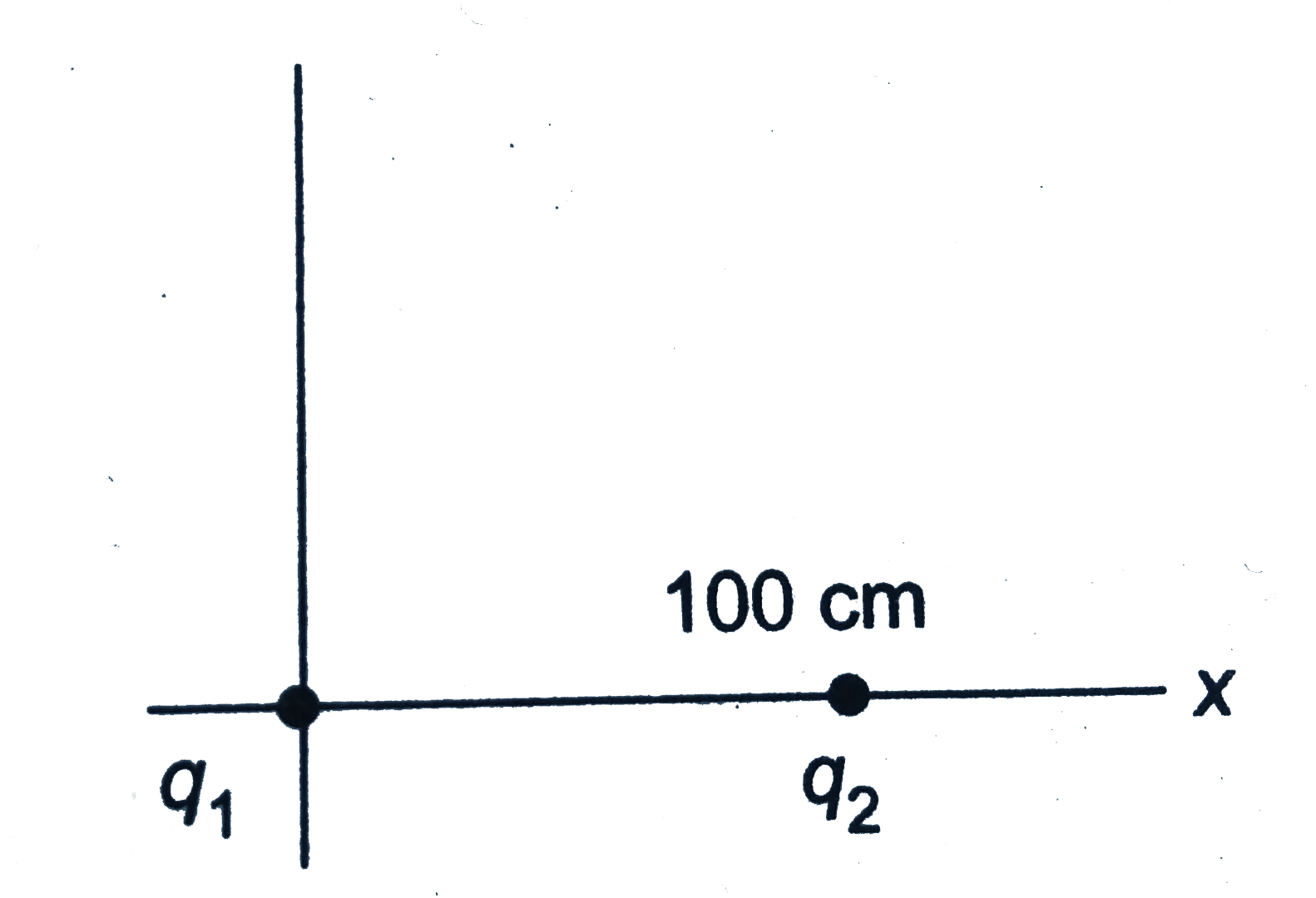A point charge q1=9.1μC is held fixed at origin. A second point charge q2=−0.42μC and a mass 3.2×10−4kg is placed on the x-axis, 0.96m from the origin. The second point charge is released at rest. What is its speed when it is 0.24m from the origin?
26m/s
2.6m/s
46m/s
4.6m/s
The correct Answer is:A
From conservation of mechanical energy, we have
Decrease in electrostatic potential =Increase in kinetic energy
or 12mv2=Ui−Uf=q1q24πε(1ri−1rf)
=q1q24πε0(rf−ririrf)
∴V=√q1q22πε0m(rf−ririrf)
=
⎷(9.1×10−6)(−0.42×10−6)×2×9×1093.2×10−4(0.24−0.96(0.24)(0.96))
=26m/s
Topper's Solved these Questions
- BOOK - DC PANDEYCHAPTER - ELECTROSTATICSEXERCISE - Exercise 24.14videos
ELECTROSTATICS
- BOOK - DC PANDEYCHAPTER - ELECTROSTATICSEXERCISE - Exercise 24.29videos
ELECTROSTATICS
- BOOK - DC PANDEYCHAPTER - ELECTROSTATICSEXERCISE - Example Type 83videos
ELECTROSTATICS
- BOOK - DC PANDEYCHAPTER - ELECTROSTATIC POTENTIAL AND CAPACITORSEXERCISE - (C) Chapter exercises50videos
ELECTROSTATIC POTENTIAL AND CAPACITORS
- BOOK - DC PANDEYCHAPTER - GRAVITATIONEXERCISE - All Questions120videos
GRAVITATION
Similar Questions
A point charge q1=1.0μC is held fixed at origin. A second point charge q2=−2.0μC and a mass 10−4 kg is placed on the x-axis, 1.0 m from the origin. The second point charge is released from rest. What is its speed when it is 0.5 m from the origin?
View SolutionA point charge q1=+2μC is placed at the origin of coordinates. A second charge, q2=−3μC, is placed on the x-axis at x=100cm. At what point (or points) on the x-axis will the absolute potential be zero?
 View Solution
View Solution
Knowledge Check
- Question 1 - Select One
A point charge q1=9.1μC is held fixed at origin. A second point charge q2=−0.42μC and a mass 3.2×10−4kg is placed on the x-axis, 0.96m from the origin. The second point charge is released at rest. What is its speed when it is 0.24m from the origin?
A26m/sB2.6m/sC46m/sD4.6m/s - Question 2 - Select One
A point charge q1=−5.8μC is held stationary at the origin. A second point charge q2=+4.3μC moves from the pont (0.26m0,0) to (0.38m,0,0). How much work is doen the electric force on q2?
A0.172JB0.272JC0.372JD0.472J - Question 3 - Select One
A point charge q1=+2.40μC is held stationary at the origin. A second point charge q2=−4.30μC moves from the point x=0.150 m, y=0 to the point x=0 0.250 m, y=0.250 m. How much work is done by the electric force on q2?
A−0.56JB−0.256JC−0.356JD−0.45J
A point charge q1=4.00nC is placed at the origin, and a second point charge q2=−3.00nC, placed on the x-axis at x = + 20.0 cm. A third point charge q3=2.00nC is placed on the X-axis between q1,andq2. (Take as zero the potential energy of the three charges when they are infinitely far apart).
(a) What is the potential energy of the system of the three charges if q3 is placed at x= + 10.0 cm?
(b) Where should q3 be placed to make the potential energy of the system equal to zero?View SolutionTwo identical charges, 5μC each are fixed at a distance 8 cm and a charged particle of mass 9×10−6kg and charge −10μC is placed at a distance 5 cm from each of them and is released. Find the speed of the particle when it is nearest to the two charges.
View SolutionA point charge q1=−1.0μC is held stationary at the origin. A second point charge q2=+2.0μC moves from the point (1.0m,0,0) to (2.0m,0,0). How much work is done by the electric force on q2?
View SolutionA charge q=−2.0μC is placed at origin. Find the electric field at (3m,4m,0).
View SolutionA point charge q1 is held stationary at the origin. A second charge q2 is placed at a point a, and the electric potential energy of the pair of charges is −6.4×10−8J. When the second charge is moved to point b, the electric force on the charge does 4.2×10−8J of work. What is the electric potential energy of the pair of charges when the second charge is at point b?
View Solution

